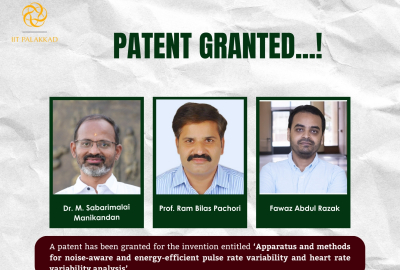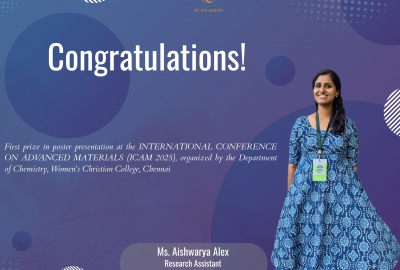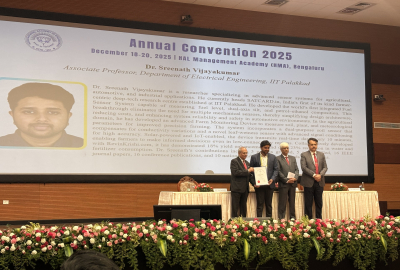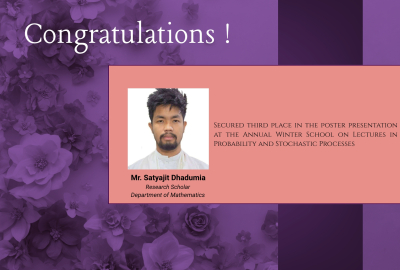
Day 3 of Science Quest-II & CRYSTAL: A Chemi-heist of sorts
The third day of the ongoing residential Science Camp for school students, May 6th, saw the Chemistry department on a roll. Dr Dinesh Jagadeesan offered an informative and peppy start to the day with the session ‘Let’s talk chemistry’. He began by asking ‘How many like Chemistry?’ Noting that the typical way to think of Chemistry is as a blackboard full of equations and chemical bond structures, he proposed that a good way to start would be by demystifying it.
Asking if students had watched Mickey Mouse and Tom and Jerry, he asked them to think about what Chemistry looked like in those cartoons. Chemistry that happens within them was usually about explosions, and things that made people invisible. Colours, fumes potions, substances with unimaginable powers. Chemistry as a mystery, he said, is what first drew him to the subject.
Moving on to a formal definition he offered “Scientific study of the properties and behaviour of matter. It is the natural science that covers the elements that make matter”. Briefly discussing all basic concepts like matter, atoms, molecules, compounds, and examples of different kinds of molecules, he went on to discuss materials and the periodic table in some detail.
Noting that all elements of the periodic table have a ‘personality’, and that the arrangement of elements in the table is on the basis of atomic number, he urged thinking about why this was so. The ‘personality’ is connected to the atomic number, or more specifically number of electrons. Drawing an analogy to how friends with less or more money could decide to pool their money and do fun things together, he spoke of ‘electrons as currency’ that help make and break bonds. This making and breaking of bonds, however, has a penalty on energy. He also mentioned other snippets of high school chemistry like the power of the periodic table being that it could predict missing elements, and that elements with higher atomic mass are more unstable.
He then posed the question “What are some of the biggest problems that face humanity that can be solved by science?” and collected student responses that helped draw up a list with Water scarcity, Global warming, Pollution, Diseases, Traffic jams, Food scarcity and Energy insecurity. He pointed out how the water, food and energy issues being fundamentally resource scarcities show how minerals, materials and molecules that the human race has at its disposal are important for world peace.
“Big ideas that changed the world are also things that we now take for granted” was his next poser to the students. He went on to discuss this using visuals and stories and offering the examples of the internet, tinned food, PET bottles replacing glass ones in the
aerated drinks industry, and stainless steel. Noting also that the solution to one problem can inadvertently cause another, as in the case of plastics, he highlighted the importance of recycling PET by depositing them in bins and not littering, and how research is still on to depolymerise plastics back to it monomers.
Turning to a discussion on “Which are the most important elements”, he touched upon Carbon, Hydrogen, Oxygen as ‘elements of life’, the difference between Organic Chemistry, Inorganic Chemistry and Physical chemistry and listed the elements important to the Economy as – Lithium, Nitrogen and Hydrogen. Unravelling the story around a picture of Fritz Haber, the Haber Bosch process, and the significance of the bulk production of ammonia in the context of the first world war and later agriculture and food production, he discussed how the Le Chatelier principle applied in the high pressure steel reactor devised for the purpose made the exothermic reaction economically viable on scale. He also shared that the composition that would form the catalyst in this reaction was supposedly found after the Nobel Prize winning scientist and his collaborators had tried 30,000 combinations.
Weaving Chemistry seamlessly into World Economic History, Dr Dinesh showed how periods of economic prosperity and depression follow a wave pattern, with the peaks corresponding to technological contributions like the Haber-Bosch process. He noted that Chemistry can provide the starting material for something that controls the economy. Currently we are in the Carbon Economy, but are also in the process of moving out of the Carbon Economy due to the depletion of hydrocarbon fuels. Hydrogen is thought to be the fuel of the future, and Reliance Industries is investing heavily in Hydrogen for this reason, he observed.
Introducing an experimental set up to study combustion and how materials are chosen as fuels, he graciously introduced and invited Chemistry Lab staff Roshni and Sukanya on stage. The pre-arranged set up with 2 similar metallic toy steamboats, sought to measure the time taken by the boats to go from one end of a water filled glass tank to the other. Ethanol and Hexane of equal weight by mol were used as fuel for the boats. The principle of the steam boat with tubes under it that were filed with water, and got converted to steam that propelled the boat forward under the impact of heat from a burning fuel in the body of the boat, served to show how Enthalpy of combustion differed for Ethanol and Hexane. The Ethanol and Hexane fuelled boats took 19sec and 7sec respectively to cover the same distance, making Hexane the better fuel. Noting that liquefied Hydrogen is currently used to propel rockets under conditions of high pressure and low temperature, and that Lithium is scarce, the research potential of the area was highlighted.
To conclude his session Dr Dinesh drew upon some Hollywood inspiration to pitch for futuristic materials – Tensile strength combined with the finesse of Spiderman’s webs, shape-memory of materials that go into making a Terminator’s body attack/damage proof and microstructure gloves to climb walls like in Mission Impossible inspired by how a gecko holds its bodyweight against gravity. He aptly summed up that Chemistry was “ Not just the study of matter, but the study of matter that matters”. The buzz he successfully created saw students swarm him with questions afterwards.
The second session of the day was titled ‘Microscopy at our Fingertips’. Dr Mintu Porel greeted the students and introduced a team of PhD scholars Liya, Anna and Debashish as the ones who would facilitate the session. She stated her aim was to trigger the curiosity of students through what was planned for them. Liya discussed how microscopes in labs were usually expensive and only sparingly accessible to students, shared how zooming in on materials and objects in daily life was interesting and how important practical applications like Key hole surgery relied on microscopes. She spoke of how though literally there was no microscope on ones ‘fingertips’ , an origami invention by a Stanford professor Dr Manu Prakash and two of his students, the Foldscope, was actually what the session was about. A youtube video featuring Dr Manu Prakash and the Foldscope followed, followed by Anna and Debashish guiding students to assemble their own Amazon-delivered and under Rs500 Foldscopes, and the students then using their Foldscopes in small teams to take pictures that would be evaluated in a friendly competition. A quiz and more fun experiments engaged the students in the the second half of the day.






